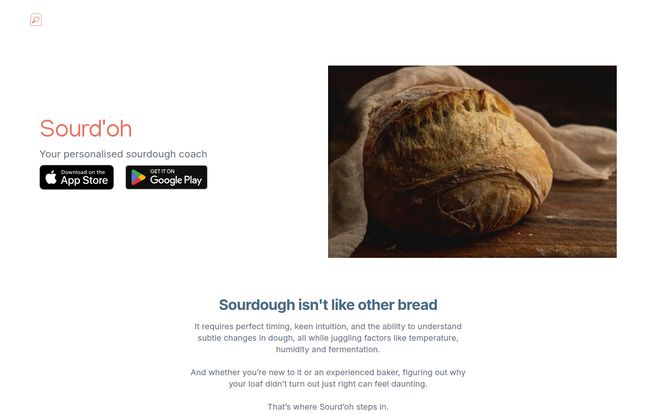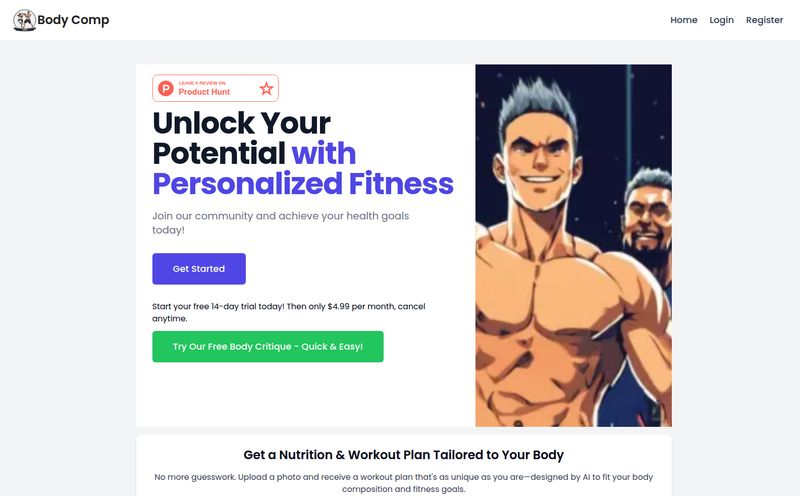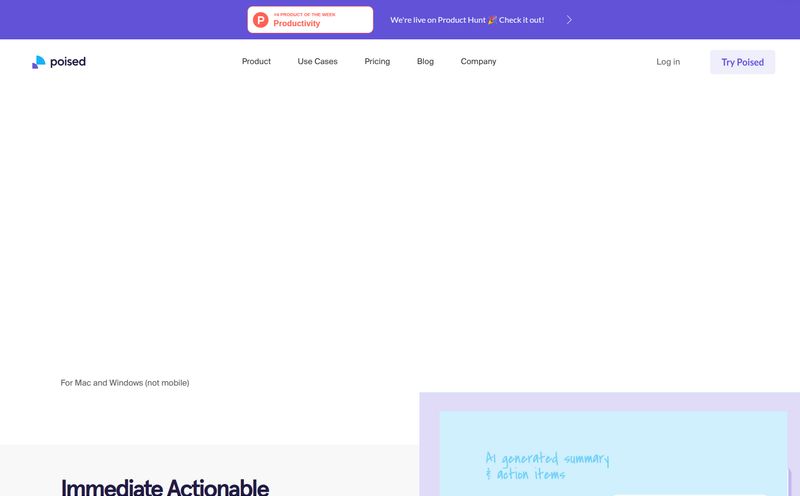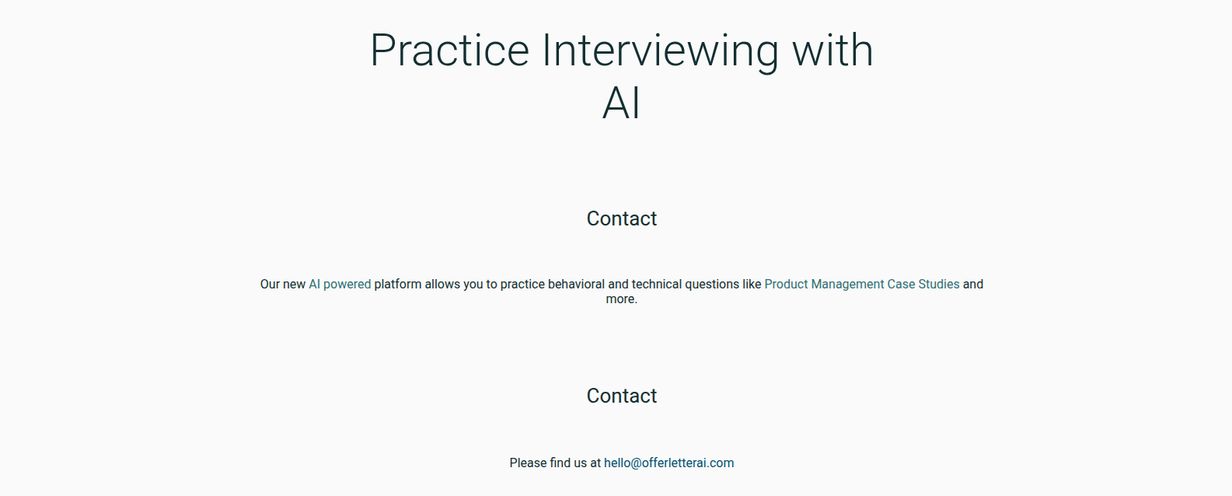Sourdough baking is a bit of a cult. A wonderful, delicious cult, but a cult nonetheless. We feed our starters like they’re weird, bubbly pets. We talk about “oven spring” and “crumb structure” at dinner parties. And we all know the unique, soul-crushing feeling of cutting into a loaf you’ve spent 48 hours on, only to find a dense, gummy frisbee staring back at you.
I’ve been there. Oh boy, have I been there. I’ve produced loaves that could be used as doorstops. I’ve stared at my flat, sad bread and wondered, what did I do wrong this time? Was it the proofing? The hydration? Did I look at the dough the wrong way? The variables can feel endless.
For years, the only solution was to scour forums, watch endless YouTube videos, or find a real-life mentor. But now, we live in the future. And in the future, there’s an app for that. Enter Sourd'oh, a self-proclaimed “personalised sourdough coach” that uses AI to critique your bread. An AI baking coach? My inner cynic and my inner baker were both intrigued. So, I took a look to see if a bit of code could really fix my crumb.
What Exactly Is Sourd'oh?
Think of Sourd'oh as a baking expert who lives in your phone and only cares about your bread. Instead of you trying to describe your loaf's problems on a Reddit thread, you just show it. You snap a picture, upload it, and the app’s AI gets to work.
It’s designed to diagnose the most common sourdough heartbreaks: the dreaded “flying roof,” a tight crumb, a bottom that bulges out weirdly. Sourdough isn't like other bread; it's a living thing, deeply affected by temperature, humidity, and timing. Sourd'oh aims to take some of the guesswork out of that delicate dance, offering you tangible advice based on visual evidence.
How Sourd'oh Tries to Tame Your Starter
The process is refreshingly simple, which I appreciate. No one wants to fight with a complicated app after fighting with their dough. It breaks down into a few steps:
- Bake Your Heart Out: Go through your usual sourdough process. Don't change a thing for the first go.
- The Moment of Truth (The Crumb Shot): Once it's cool, slice your loaf open. This is key. A picture of the outside is nice, but the crumb is where the story is told. Take a clear, well-lit photo of the slice.
- Submit for Analysis: Upload the photo to the Sourd'oh app. The AI then analyzes your picture, looking at cell structure, crust color, shape, and all those little details.
- Get Your Report Card: The app gives you a rating and, more importantly, a diagnosis. It’ll say things like, “Looks a bit under-proofed due to the large, irregular holes” and then provide actionable advice for your next bake.
It even keeps a log of your bakes, which is a feature I genuinely love. You can track your recipes, see your progress, and connect the dots between small changes and better results. It’s like a digital baking diary.

Visit Sourd'oh
The Good, The Bad, and The Doughy
So, does it work? Like any tool, it has its strengths and its limitations. It’s not magic, but it’s pretty clever.
Where It Shines: The Digital Baking Buddy
The biggest win here is the personalized feedback. We’ve all googled “why is my sourdough gummy?” and gotten a million generic answers. Sourd'oh looks at your bread and gives you tailored advice. That specificity is a game-changer for someone learning the ropes. One of the user comments I saw was, “Being able to keep track of my bread and how I’m improving is a game changer,” and I couldn’t agree more.
It helps you build a mental library of what certain issues look like. After a few analyses, you start to recognize the signs of over-proofing yourself, without even needing the app. It's training you to be a better, more intuitive baker. It’s also incredibly satisfying to see your ratings improve over time, turning frustration into a sense of accomplishment.
Where It Falls a Bit Flat
Let's be real, an app can't replace the feel of dough. It can't tell you if your starter was perfectly ripe by its smell, or if you developed enough gluten during your stretch-and-folds. It’s effectiveness is entirely dependent on the quality of the photo and the AI's programming. A dark, blurry photo isn't going to give you a useful analysis.
And while it claims to rate flavor, I’m a bit skeptical. It can probably infer potential flavor based on signs of good fermentation (a lacy crumb, a blistered crust), but it can't taste the sour tang or the wheaty notes. So take that part with a grain of salt. This is a visual analysis tool, first and foremost.
Is This the End of Baking Intuition?
Some purists might scoff. Baking is an art! It’s about feel! And they’re not wrong. But I don’t see a tool like Sourd'oh as a threat to that. I see it as a supplement.
I use a digital scale for precision and a thermometer to check my final dough temp. Are those cheating? Of course not. They’re tools that provide data, helping me make better decisions. Sourd'oh is in the same category. It’s a data point. It provides a visual feedback loop that can be incredibly hard to get otherwise.
It’s not here to bake the bread for you. It's here to hold up a mirror to your bake and help you understand it better. The goal isn't to rely on the app forever, but to use its insights to build your own intuition faster.
"I love niche, well made apps like this."
- An App Store User
The All-Important Question: What's the Price?
Here’s the rub. As of writing this, the main website doesn’t list a clear price. This isn’t uncommon for new apps hitting the market. They're likely testing different models.
My guess? We'll probably see a freemium model – maybe one or two free analyses to get you hooked, with a monthly or annual subscription for unlimited use and advanced features. Or it could be a one-time purchase price. Your best bet is to check its page directly on the Apple App Store or Google Play Store for the most current pricing information.
Who Should Actually Download Sourd'oh?
Is this app for every baker? Probably not. But for certain people, it could be the best few bucks they spend on their baking hobby.
- The Frustrated Beginner: If you're consistently making loaves you're unhappy with and can't figure out why, this app is practically made for you. It will be your patient, non-judgmental teacher.
- The Data-Driven Baker: If you're the type who keeps a detailed notebook of your process, you'll love the tracking features and the objective analysis. It adds another layer of data to your experiments.
- The Curious Intermediate: Maybe your bread is pretty good, but you're chasing that perfect, lacy, open crumb. Sourd'oh can help you fine-tune your process to get from good to great.
If you're a seasoned pro who can diagnose a loaf from across the room, you might not need it. But for the rest of us mortals, it's a seriously interesting prospect.
My Final Loaf of Thought
I came into this skeptical, but I’m walking away impressed. Sourd'oh is a smart, focused tool that tackles a very real pain point for a huge community of bakers. It’s not going to magically turn you into Chad Robertson overnight, but it can absolutely shorten the learning curve and make the entire process less of a mystery. It empowers you with information, and that's always a good thing.
Sourdough will always be part science, part art, and part stubbornness. A tool like Sourd'oh doesn't diminish the art; it just makes the science a little more accessible for everyone. And anything that leads to fewer doorstops and more delicious bread is a win in my book.
Frequently Asked Questions about Sourd'oh
- 1. Does Sourd'oh work for other types of bread?
- It's specifically designed and trained on sourdough bread. While the principles of fermentation are similar, the visual cues for a well-made sourdough are unique. You likely won't get accurate results for a standard yeasted loaf or rye bread.
- 2. How does the AI know what's wrong with my bread?
- The AI has been trained on a massive dataset of sourdough photos, each one linked to specific outcomes and problems. It recognizes patterns in the crumb (like small, dense holes vs. large, uneven ones) and correlates them with common baking issues like proofing times or shaping technique.
- 3. Is my baking data private?
- Like with any app, it's always smart to review the privacy policy. Generally, the photos you upload are used to give you feedback and may be used anonymously to further train and improve the AI model. The app's policy on the App Store or Google Play will have the specific details.
- 4. Can Sourd'oh really tell me about my bread's flavor from a photo?
- Directly, no. It can't taste your bread. However, it can infer potential flavor characteristics. For example, a lacy, open crumb and a blistered, deeply caramelized crust are strong indicators of good, long fermentation, which typically results in a more complex, tangy flavor. It’s an educated guess based on visual cues.
- 5. What kind of photo gives the best results for analysis?
- Use a sharp, clear photo taken in good, natural light. Slice the loaf right through the middle to get a representative crumb shot. Make sure the entire slice is in focus, from the top crust to the bottom. The better the photo, the more accurate the AI's analysis will be.
Reference and Sources
- The official Sourd'oh Website: sourdoh.app
- For general sourdough troubleshooting and great recipes, I always recommend The Perfect Loaf.
- Sourd'oh on the Apple App Store and Google Play Store.



